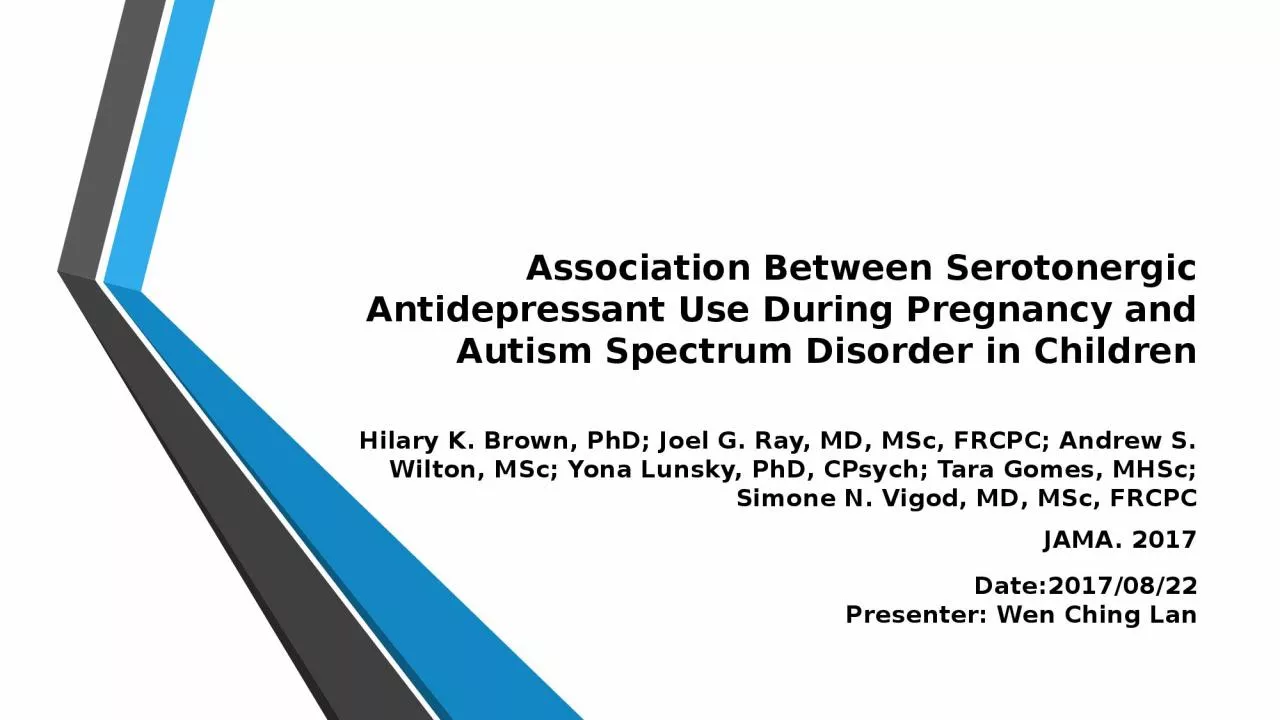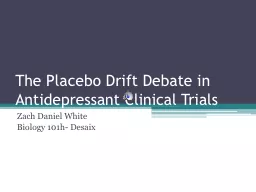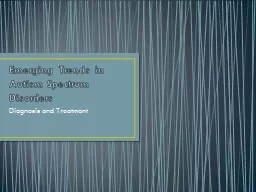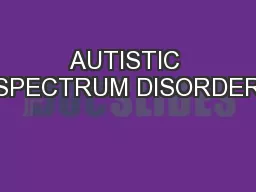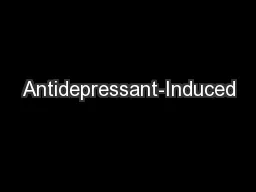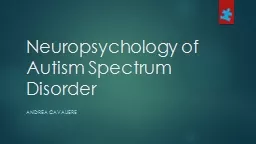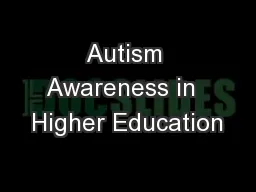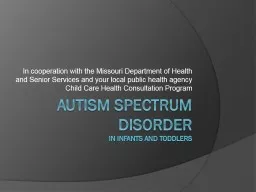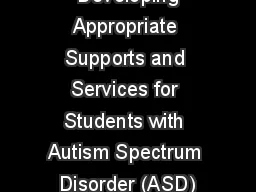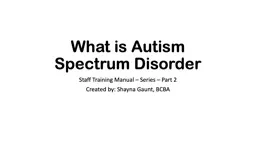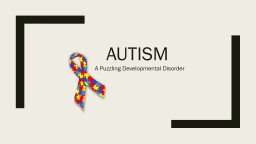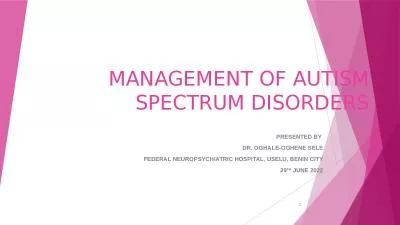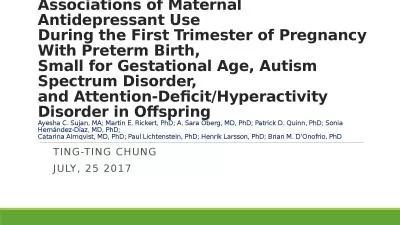PPT-Association Between Serotonergic Antidepressant Use During Pregnancy and Autism Spectrum
Author : Powerpixel | Published Date : 2022-08-04
Hilary K Brown PhD Joel G Ray MD MSc FRCPC Andrew S Wilton MSc Yona Lunsky PhD CPsych Tara Gomes MHSc Simone N Vigod MD MSc FRCPC JAMA 2017 Date20170822
Presentation Embed Code
Download Presentation
Download Presentation The PPT/PDF document "Association Between Serotonergic Antidep..." is the property of its rightful owner. Permission is granted to download and print the materials on this website for personal, non-commercial use only, and to display it on your personal computer provided you do not modify the materials and that you retain all copyright notices contained in the materials. By downloading content from our website, you accept the terms of this agreement.
Association Between Serotonergic Antidepressant Use During Pregnancy and Autism Spectrum: Transcript
Download Rules Of Document
"Association Between Serotonergic Antidepressant Use During Pregnancy and Autism Spectrum"The content belongs to its owner. You may download and print it for personal use, without modification, and keep all copyright notices. By downloading, you agree to these terms.
Related Documents

